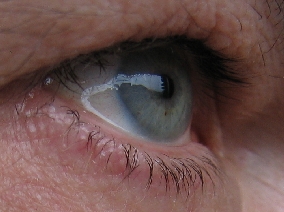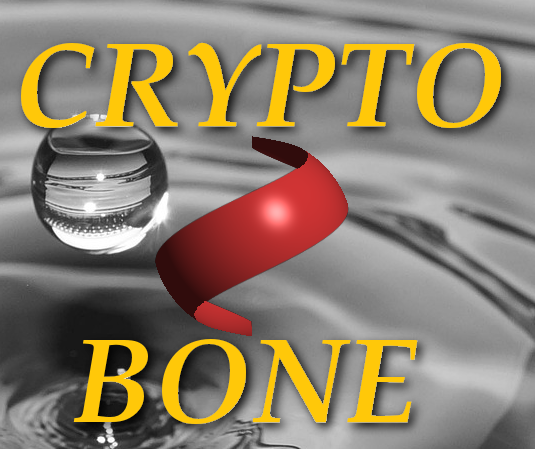Booting a CD Without a CD Drive
ISO Files
Most Linux distributions and a number of CD utilities like Clonezilla or GPARTED-Live come as iso-images, ready to be burned to a CD medium, to start an installation or running a live session for some useful purpose. But all these iso files are supposed to be booted inside an ordinary CD drive. What if you just don't have a CD burner at hand or if your CD drive is damaged or missing all together, because you are testing the shiny new motherboard without a CD drive?
Don't think you are stuck, there's help around the corner that will lead you into a habit of booting your iso files in a much more creative fashion.
"Stop for a moment, could I not simply put the iso file on a USB key using the dd command? Most modern BIOSes are perfectly capable of booting USB keys and surely there is a USB slot on your new motherboard you can use."Of course you could do that, the iso file contains a valid iso9660 filesystem together with the bootloader for CDs. And the dd command will transfer the file to your USB key without adding any other structure. But, don't expect the new USB key to boot like a CD, because after you have changed your BIOS settings to allow booting from a USB hard disk, the BISO will expect the structure of a hard disk not that of an iso-filesystem.
It will look for a MasterBootRecord (MBR) in sector 0 in the same way as if it would boot your ordinary hard disk. And an iso-filesystem doesn't have a MBR and a partition table where the BIOS expects it to be. So forget booting iso files directly.
"Ok, seems as if there is no way around putting a bootloader like grub on the USB key, and ... , wait, there is a file called iso9660_stage1_5 in the grub directory. It looks like grub has iso9660 support already. Can we use this to boot the iso file?"Well, unfortunately no. The iso9660 support built into grub can be used to create a bootable CD with grub as the bootloader. Your file is being used when a new iso file containing your grub bootloader is created. What we need instead is the ability to read the kernel and the initramdisk inside the iso-filesystem at boot time when no filesystem is mounted.
"Sounds as if we need a loop device to get at the files inside the iso filesystem. Does grub support mounting a iso-filesystem using a loop device?"The New Grub
Yes and no. The traditional grub (version 1) that everyone uses does not have this loopback support, but the grub development team has been working on grub2 for a number of years now, which has loopback support already. The new grub2 is still under development, so it's not yet ready to replace the legacy grub version 1, but grub2 is exactly what we need to boot our iso files directly.
A Word Of Caution
So we are about to prepare a USB key to boot iso files with the grub2 bootloader written into the key's master boot record. Writing MBRs on a Linux system usually raises blood pressure a bit, as we have to be extra cautious not to ruin our running Linux system. If you want to follow me from here, please make sure that you do not perform the grub2 installation on your company's production server and double-check everything before issuing commands, to be on the safe side.
And for those of you, who hesitate to write MBRs at all, I have an offer for you at the end of this posting, read on.
Preparing The USB Boot Key
Like any other software grub2 can be installed using the distros repositories, at least with Fedora 11 that I use now. The installation will not replace our legacy grub software we are using to boot our computer, as the new files go into a directory "/boot/grub2" without changing anything of the current grub setup unless grub2 is deliberately used to overwrite the MBR. And this is the only thing we have to avoid. But for now, our objective is to get the grub2 software onto our USB key, writing the key's MBR will then be the crowning event before we start testing the key.
For preparing the boot key it is absolutely essential that you know how the Linux kernel recognizes your USB key. To find out, you can observe the log file "/var/log/messages" while you plug your key into the computer. For now I assume that you have one hard disk in your computer (/dev/sda) and your USB key will probably show up as /dev/sdb. First we re-partition the key and create two Linux partitions, a small one of 10 MBytes for the grub2 software and a larger one where all our iso files can be stored:
#> umount /dev/sdb1
#> fdisk /dev/sdb
#> mkfs -t ext3 -c /dev/sdb1 ; tune2fs -L usbboot /dev/sdb1
#> mkfs -t ext3 -c /dev/sdb2 ; tune2fs -L isos /dev/sdb2
You can now mount the second partition and copy all the iso files you wish to boot into this location.
Writing the MBR now requires that the first partition is mounted on a well know mount point like /mnt, because we will use this directory to write the grub2 software to the key with the following command:
#> grub2-install --root-directory=/mnt /dev/sdbPlease double-check that your key is mounted and is called /dev/sdb before you use this command, which populates the directory /mnt/boot/grub2 with grub2 modules and writes the MBR into /dev/sdb.
As you may know there is one task still left before we can start testing our boot key, we need to create a menu list, which is called "/boot/grub2/grub.cfg" now. A number of changes have been made to the config file compared to the old grub, so let's have a look at the new configuration:
set timeout=5
set default=0
menuentry "ISOLINUX" {
loopback loop (hd0,2)/centos.iso
set root=(loop)
linux /isolinux/vmlinuz
initrd /isolinux/initrd.img
}
The most remarkable change is the numbering of partitions which has become more natural as the first partition now is (hd0,1), while hard disks still start with number 0. Then the old title entry is replaced by menuentry and loading the kernel is now done with the linux command. Apart from all these cosmetics we can now create a new device called (loop) that will replace a real partition like (hd0,2) to access files inside the iso-filesystem, once we have connected the iso file with this new device using the loopback command.
It is even possible to list the files that grub2 can see on the (loop) device using the grub2 command line:
grub2> set root (loop)
grub2> ls /
Now it's time to check if the ISOLINUX menuentry works. Reboot and see your new boot key fire up the CentOS netinstall process. Voila.
Download Your Bootable USB Key
I have prepared an image of my boot key for you that you can download, if you want to create a boot key without the hassle of following the steps above. The small 32 MByte image file contains all the magic and can be copied to your USB key with the dd command. Please send me an email and I will give you a download link with the necessary instructions. Once you have your key working, you can delete and re-create the second partition to make space for all your live CD iso files on the key. All you need to edit is the config file.
That way you can carry all your distros on one key and boot them all from the grub2 menu without having to change the Linux system on your hard disk.

